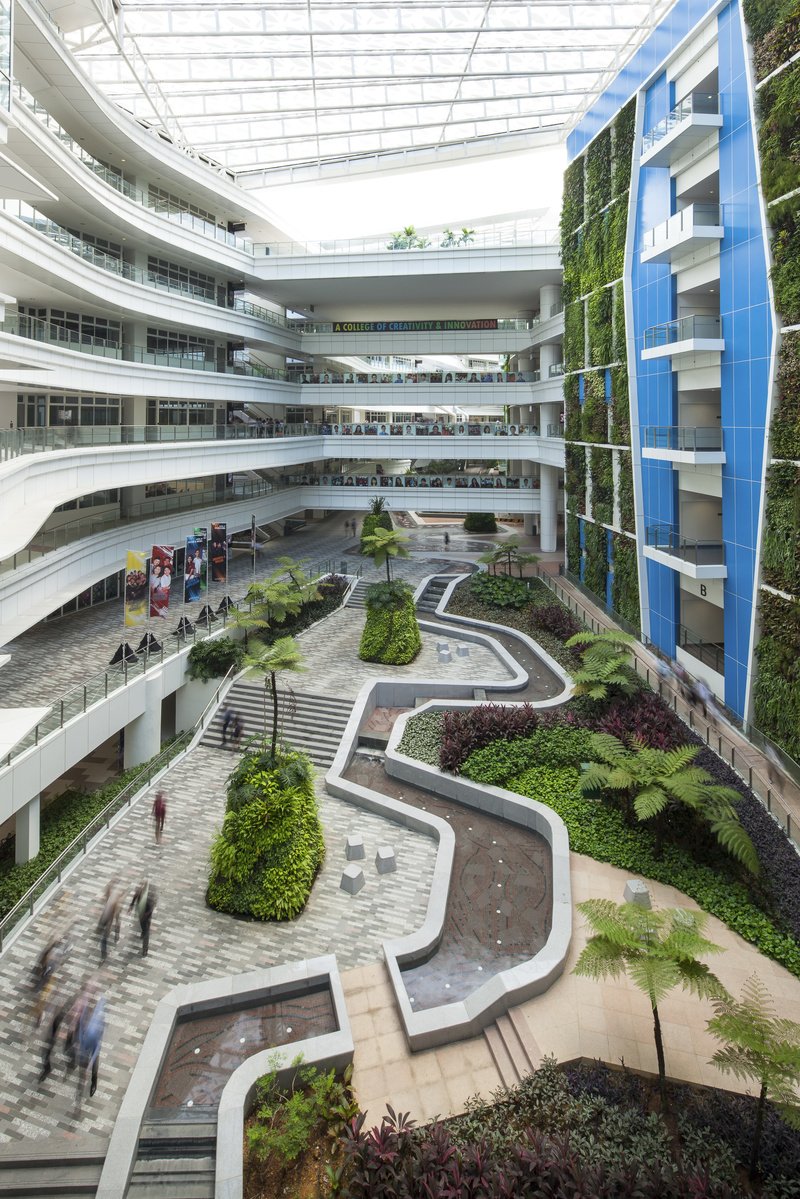5 Living Walls Built To Improve City Environments
Table of Contents Show
A lush, green exterior is certainly more aesthetically pleasing than the brick, concrete, and metal building materials typically used in construction. Architects are more commonly incorporating living walls into their designs. But are you also aware of the environmental, social, and economic benefits living walls have on cities and their inhabitants? In this article, we’re sharing a few of our favorite living walls installed in cities around the world.
How Do Living Walls Help Combat Urban Heat, Air Pollution, and Noise?
Cities are incorporating living walls, among other green infrastructure strategies, to mitigate the effects of climate change. When global temperatures rise, our dense concrete jungles become even hotter, with some studies showing that daytime temperatures can be as much as 7 degrees Fahrenheit higher than their rural counterparts. This urban heat island effect is caused by the absorption and re-emission of heat from buildings and streets. These extreme temperatures impact city dwellers negatively, including disproportionate impacts on low-income populations. Living walls serve as building insulators, and in response reduce a building’s heating and cooling utility bills.
Air pollution is another concern for city-dwellers. Not only are living walls used to decrease surface temperatures, but they are also capable of mitigating air pollution. Noise pollution is the lesser talked about urban pollution pain point affecting city inhabitant’s health and wellbeing, and is also decreased by the use of internal and external living walls. Living walls act as a soundproofing barrier to city sounds such as traffic and construction.
Living walls encourage biodiversity by acting as a food source and nesting habitat for birds and invertebrates. And finally (if you aren’t sold yet) urban greening improves property values.
What Are Some Examples of Living Walls in Cities Around the World?
Patrick Blanc, Caixa Forum - Madrid
A repurposed old 1900’s power plant in Madrid is transformed into a lush green oasis. The system features 250 plant species carefully chosen to flourish in the hot Madrid climate. This wall provides temporary relief from Madrid’s heat as visitors can feel the difference in temperature besides it.
ITE Headquarters & Central College - Singapore
This 82 foot living wall was designed by architect Lawrence Ler of RSP Architects Planners & Engineers. These green walls cover the facade of 8 campus blocks and were designed to regulate heat in the tropical climate.
Universidad Claustro De Sor Juana - Mexico City
Mexico City has been decorated with greenery to combat the city's air pollution problem. The wall covers 2,852 square feet, adding a perspective of nature to this urban landscape.
One Central Park - Sydney
This is an example of a living wall on the facade of the Residential and Retail towers. Designed by Patrick Blanc, the building hosts 23 Green Walls including 35,000 wall plants and 85,000 façade plants with over 350 different species mostly native to Australia.
Tree House - Singapore
Located in Singapore’s District 23 this building stands 24 stories tall with 429 units. This living wall is considered the world’s largest. The condo building was designed to reduce its carbon footprint by adding green features along with the green wall aiming to save approximately S$500,000 in water and energy savings each year. The building also features heat-reducing windows and motion sensors that automatically activate lights.
About The Author
Lily Turner is a biophilic designer, project manager, and living wall design-build specialist with extensive experience across the United States. She brings a unique perspective on integrating social, environmental, and economic values into living architecture to create greener, more sustainable urban cities.
Lily collaborates closely with architects, designers, and contractors to deliver tailored living wall solutions that align with budget, design goals, and project scale. She is also the Chair of the Green Roofs for Healthy Cities’ Living Wall Committee and an active member of the Green Plants for Green Buildings Committee, advocating for innovative green infrastructure in the built environment.








